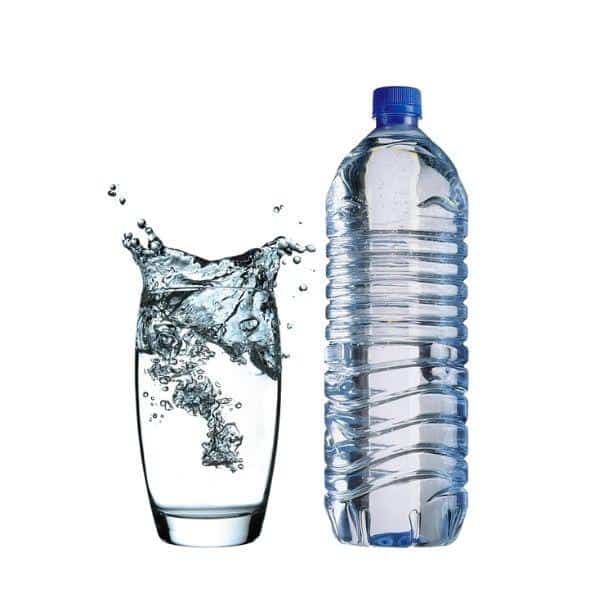4 Effective Ways of Removing Aluminum From the Drinking Water
Aluminum is abundant in nature, and it can mix easily with groundwater that may be your house water system. It can show a number of harmful outcomes to you. Hence, you need to know practical ways to counterbalance the effects of high Aluminum levels.
The four procedures listed below will efficiently remove aluminum ions from drinking water.
Reverse Osmosis
Reverse Osmosis is an excellent technique to eliminate a substantial portion of contaminants from natural water by putting the water under tension through a semipermeable RO film. Reverse osmosis systems will also function wonderfully in reducing Aluminum in drinking water.
Technically, reverse osmosis membranes are cellulose and polyamide derivatives, and they can remove 98 percent of dissolved particles from drinking water. Two critical parameters affecting contaminant blocking are the pore size and type of RO membrane.
A reverse osmosis filter will help you provide healthy drinking water to your loved ones.
Portable Cation Exchange With Hydrochloric Acid
It is an ion exchange process where regeneration is important. You have to use either sulfuric acid or hydrochloric acid for periodic acid regeneration.
However, it is not a recommended option for completely autonomous home treatment systems owing to the necessity for periodic acid regeneration.
A tank exchange program is required if this approach is employed, so trained and competent workers manage regeneration at a central location.
Distillation
Distillation removes almost 99 percent of the aluminum from water. It is a process that involves converting a liquid into vapor, which is then condensed back into liquid form. As Aluminum is one of the particles residing in water, distillation cleans the water from it.
Distillation is one of the popular processes utilized by many early scientists, including Aristotle, Pliny the Elder, etc., for water treatment. As the words of Aristotle reflect the importance of distillation as the evaporation of seawater makes pure water.

Electrodialysis
It is also one of the effective ways for the reduction of Aluminum. Though this method is less efficient, still aluminum ions can find their way out of the water with it.
The process is electrochemical, where the transfer of ions causes the separation of aluminum salts from water. It is carried out in a specialized cell that first ionizes the solution and purifies it by isolating contaminants.
What Is Aluminum?
The Earth’s surface is full of various natural elements. Among them, Aluminum sits at number three in terms of abundance. Statistically, aluminum content makes up about 8% of the surface.
As per the World Health Organization (WHO) study, you will find many Aluminum compounds and Aluminum salts in your drinking water. Aluminum Sulphate is the most common form that you can find in drinking water. Other forms include Aluminum Hydroxide and Aluminum Chlorohydrate, etc.
Normally, the total Aluminum concentration in the body is about 9 ppm, while some of the body organs may have higher concentrations up to 100 ppm. Also, there is a specific amount of Aluminum intake. So, bypassing the threshold of aluminium content can create problems for the body.
Source of Aluminum Contamination
Although Aluminum is the third-most occurring element in the earth’s crust and is widely used in food, our body barely gets it. It is due to its low solubility in water. Therefore, it is not a concern for industrial and municipal water systems.
However, Aluminum makes its way into the drinking water through Alum (Aluminum Sulfate), used as a coagulant in treatment plants of water. It is the primary source of Aluminum in water.
Well, there is a reason for adding Aluminum into the water during the treatment. For instance, water is filled with parasites and microorganisms capable of causing various diseases. On the other hand, Aluminum sulfate is great for its counteract.
Therefore, Aluminum is added. But Aluminum ions themselves can cause problems. So, you need to remove any residual aluminum from the water to ensure the safety of your loved ones.
The Symptoms & Danger of Consuming Aluminum
The adverse effects of aluminum are an unsolved puzzle for scientists to date. There is no complete link understood. However, aluminum has been considered a hazardous ion and linked to several effects mentioned below:
Health Effects:
As cleared by many studies, the normal level of aluminum exposure is not harmful. On the contrary, the higher levels of this ion can lead to serious health issues ranging from neurological disorders to other body diseases.
Among the neurological disorders, Alzheimer’s disease, Lou Gehrig’s disease are on the top of the list. But that’s not it! Nerve damage, dementia, and other neurological problems are associated with the aluminum build-up in the body cells.
Furthermore, some cases link higher aluminum concentrations to several skeletal diseases, reproductive diseases, and cancer. However, there is negligible evidence backing up these cases.
Environmental Effects:
Aluminum has a negative impact on plants and aquatic life. The higher level of this ion in groundwater causes many problems due to the rise of pH values. The increment of pH value results in aluminum solubility that yields the dissolution of aluminum ions in water.
Plants need phosphate for normal functioning. However, the dissolved aluminum is toxic to the roots of plants, and they stop phosphate intake.
Also, these high aluminum levels are hazardous to aquatic life in rivers and lakes. With that said, it needs to be tackled with care.

Does Water Filter Remove Aluminum?
Yes, water filters are great for removing aluminum from drinking water. As other techniques, such as ion exchange, reverse osmosis, etc., are excellent for removing water filters make it easier and quicker.
With that said, water filters, including countertop, ionizer, water filter jug, and many others, effectively eliminate hard minerals like aluminum from the water. This way, they provide you with pure water, free from pollutants that are necessary for your better health.
Which Water Filters Are Used for Aluminum Removal?
You may wonder which water filters to buy that can remove aluminum efficiently, right? Don’t worry; we have got you covered. With our list of top water filters, you will have your mind cleared on which water filter to buy, keeping your needs in view.
Water ionizer:
As pH plays a vital role in the removal of aluminum, a water ionizer is excellent with this process. A water ionizer is expensive. However, the investment is worth the filtration and perks of it.
This water filter is a handful in removing a large number of contaminants, including aluminum. It is equipped with a pre-filter that uses a carbon filter to remove usual contaminants before water supply into the water ionizer.
Moreover, the price is high, but the maintenance cost is economical. So, it is a worthy water filter to try.
Water Pitcher And Dispenser:
Are you bored of massive and bulky water filters and want high-quality water? Give a try to the water pitcher and dispenser. With so many features like small size, portable, pre-filled water jugs, and alkaline remineralization, it gives you the comfort you desire.
The filtration is effective against chlorine, mercury, heavy metals, aluminum, etc., without costing you deep pockets.
Also, you can refrigerate along with the purification of water with this water filter. It’s not wrong to call it the cheapest water filter for alkaline water production.
Faucet Mounted Filter:
It is one of the simplest and fastest water filters to remove aluminum in water. As simple as it looks, you can install it on the go without the need for additional tubing or drilling.
The filtration is more effective, eliminating aluminum, chlorine, hard metals, and other impurities up to 0.5 microns in size.
These filters are less expensive and cost less on replacement each year. You can meet water treatment demands by using this method.
Countertop Filtration:
A counter-mounted filter is linked to the sink through tubing in this treatment method.
Water is filtered and returned to the faucet through a return tube or spout linked to the filtration device.
For water purification, countertop filters are a less costly choice. In addition to removing up to 99 percent of heavy metals, these devices also prevent the formation of microorganisms.
FAQs on How to Remove Aluminum From Water
How do I know if my house is contaminated with Aluminum?
Water containing aluminum does not have a distinct flavor or odor, but there are certain telltale symptoms to watch for:
When aluminum concentrations exceed 0.2 PPM, the water may become cloudy and develop a blue tint. Nonetheless, there is no way to determine for sure how much aluminum is in drinking water without testing it.
Do Water softeners remove Aluminum?
Yes, water softeners like a cation exchanger can remove Aluminum. But it is not an excellent water treatment due to the need for acid regeneration. Therefore, this process is never regarded as a suitable home treatment.
Does boiling water remove Aluminum?
Apparently, the boiling of water does not remove aluminum from it. At the start of the boiling process, the hydrogen of water evolves and reacts with aluminum and alloys of aluminum. However, there comes a stage where the process stops. It is when the alumina monohydrate forms a resistant layer during the process.
Conclusion
The Environmental Protection Agency (EPA) report suggests that daily aluminum intake must be kept at about 10 μg a day. At this level, aluminum is harmless.
However, its higher levels can upset your health. Therefore, its timely eradication is necessary.
We hope you found our information useful. Are you aware of any other means for the removal of this contaminant? Don’t hesitate to comment.
